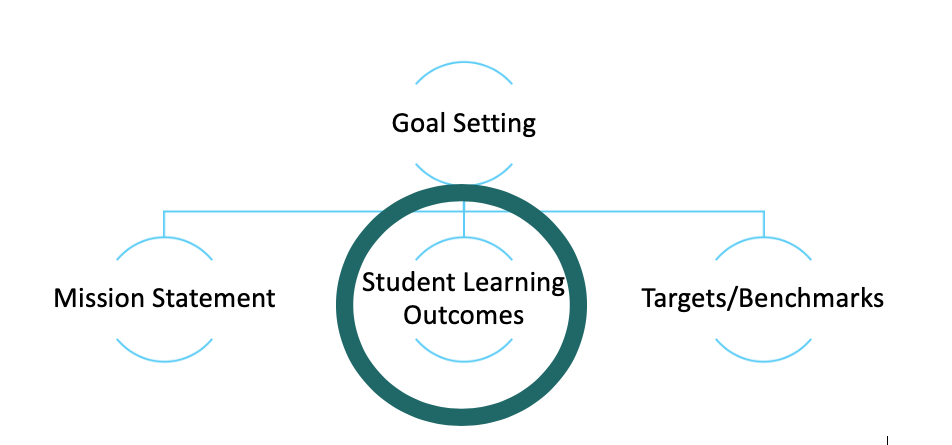
The first step in the assessment process is setting goals. In order to do so, programs must have a mission statement. Once the mission statement has been completed, it is time to write Student Learning Outcomes.
Student Learning Outcomes are a set of statements that provide direction for the program and what the program plans for students to be able to do by the time they graduate from the program.
Typically a program has between three (3) and six (6) Student Learning Outcomes. However, some specialized accrediting organizations prescribe Student Learning Outcomes in which a program may have more.
The first question faculty should answer when developing program-wide Student Learning Outcomes is: What do I want my students to be able to do by the time they graduate from my program?
The OAIR office is happy to help you write Student Learning Outcomes by providing consultations and additional resources. For more on how to write a Student Learning Outcome, visit our Student Learning Outcomes How To page.
FAQ's
What is a Student Learning Outcome? Student Learning Outcomes (SLO) should be written when you design your program of study as a list of discrete and measurable goals you expect students completing your program to be able to achieve.
Why do I start my assessment plan with Student Learning Outcomes? Your Student Learning Outcomes help inform your curriculum and assessment measures. Your Student Learning Outcomes tell you what needs to be assessed, analyzed, and reported. You should indicate why each objective is important for your program/field, linking it with long-term benefits related to graduate school, job preparedness, civic engagement, etc. (Fulcher, Good, Coleman, and Smith, 2014, 10).
I’ve never written a Student Learning Outcome before. Where do I even start? Student Learning Outcomes typically start with the phrase, "Students will be able to," followed by a measurable verb (i.e. synthesize), and conclude with what your discipline expects students to be able to do upon graduation.
Here are some relevant resources: Bloom’s Taxonomy, Linda Suskie's Blog, and http://jfmueller.faculty.noctrl.edu/toolbox/howstep1.htm
My discipline is so vast, how do I know how many Student Learning Outcomes is enough? You want to describe in actionable, discrete, and measurable terms what your students should be able to do when they complete your program. While there are many aspects to this, typically between three and six, program level Student Learning Outcomes should be sufficient. Some programs might have specialized outside accreditors with standardized Student Learning Outcomes. In the case of a specialized accreditor, you may very well have more than six Student Learning Outcomes.
WORKS CITED
Fulcher, K.H., Good, M.R., Coleman, C.M. and Smith, K.L., 2014. A Simple Model for Learning Improvement: Weigh Pig, Feed Pig, Weigh Pig. Occasional Paper# 23. National Institute for Learning Outcomes Assessment.
Horst, S. J., & Prendergast, C. O. (2020). The Assessment Skills Framework: A Taxonomy of Assessment Knowledge, Skills and Attitudes. Research & Practice in Assessment, 15(1), n1. http://www.rpajournal.com
